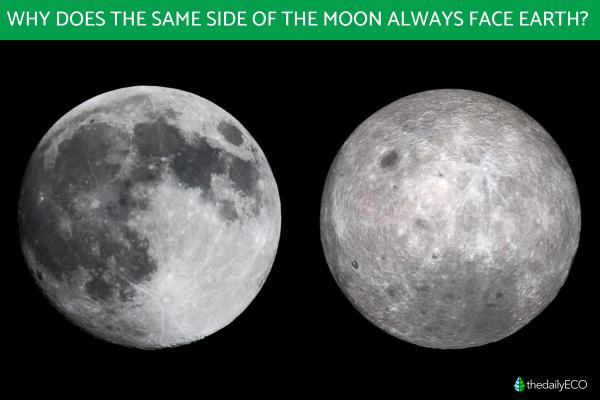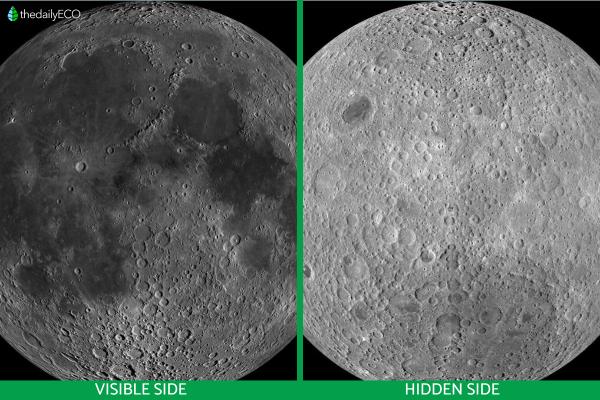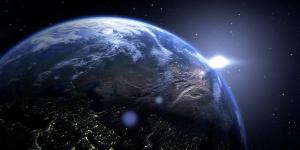Why Does the Same Side of the Moon Always Face Earth?


Just as the mirror has two faces, so does the Moon. As with the planet it orbits, the Moon is largely spherical. Its surfaces are curved due to the force of gravity during its formation. From our perspective on Earth, we cannot easily see the shape of the Moon. It appears as a flat circle. It is in this way we can say the Moon has ‘faces’ or ‘sides’. There is a visible side which we can see from the Earth, but this is all we could see until relatively recently. It was only through space exploration that we could create images of the Moon from other perspectives. It is for this reason thedailyECO asks why does the same side of the Moon always face Earth?
How many face does the Moon have?
To understand the faces of the Moon, we need to understand its motion. The Moon's movement has two distinct motions. These are the rotation along its own axis and its motion in orbit around Earth. Both motions are synchronized, meaning the the time it takes to make a full rotation on its axis is the same time it takes to complete one full orbit around the Earth. This duration is approximately 27.3 days.
Known as synchronous rotation, this phenomenon means that we always see the same side of the Moon from our planet. That's why we often say the Moon has two sides. One is the the visible side (or near side) and the other is the hidden side (or far side).
- Visible side: the Moon's visible side is the one we observe from Earth. It is marked by vast plains known as ‘seas’, although they are actually formed by ancient solidified lava and not water. It also has features such as impact craters and mountain ranges. This side has been widely studied, photographed and mapped due to its constant presence in the night sky. Over millennia, many cultures have found patterns in its shadows and formations. Perhaps the most famous is the so-called ‘Man on the Moon’. There are also said to be animal figures or mystical symbols. These interpretations are merely optical illusions caused by the play of light and shadow on its uneven surface.
- Hidden side: the far side of the Moon remained completely unknown until the mid-20th century. Since it's not visible from Earth, we were only able to see it thanks to space exploration. In 1959, the Soviet Luna 3 probe captured the first images of this mysterious side.
In addition to learning about the motion of the Moon, you may want to discover what makes the Earth move in our related guide.

Why are the faces of the Moon different?
The difference between the two sides of the Moon is one of the most interesting mysteries in astronomy. Although its study is an ongoing process, there are some fairly solid theories to explain it.
The most widely accepted hypothesis for the Moon's origin is the giant impact theory. This holds that our satellite formed from the debris ejected into space following a massive collision between the early Earth and a Mars-sized body called Theia. This is believed to have occurred some 4.5 billion years ago. This violent formation left the Moon extremely hot, with a magma ocean on its surface.
As the Moon cooled, the near side closest to Earth is thought to have remained relatively warmer for longer. This was due to our planet's gravitational pull. Staying warmer would have facilitated the formation of the large basalt ‘seas’ on the near side, as the heat allowed magma to flow and fill the craters.
The Apollo missions and more recent probes have revealed that the chemical compositions of the Moon's two sides are different. The near side has much higher concentrations of heat-producing elements like potassium, thorium and uranium. These may have sustained its volcanic activity for millions of years longer than the far side.
Conversely, the far side is much more rugged and heavily cratered. This is partly because it lacks the large lava seas that cover many of the craters on the near side, making their ancient impacts more evident. Furthermore, being farther from Earth, this side was more exposed to direct impacts from meteorites and comets in the early years of the solar system.
Tidal forces also played a crucial role. These forces not only slowed the Moon's rotation, but also caused a slight distortion in its shape. This made the crust on the near side thinner than that on the far side. This thinner crust allowed magma to erupt more easily, forming the large basaltic seas that dominate our side of the Moon.
Discover more about the differences between celestial bodies with our article explaining the differences between planets, stars and natural satellites.
Why do we always see the same side of the Moon from Earth?
The reason the same side of the moon always faces Earth is dye to the phenomenon of synchronous rotation we explained before. Also called tidal locking, this synchronization occurs when a celestial body rotates on its axis in exactly the same amount of time it takes to orbit another body. In the case of our Moon, the body it orbits is our planet Earth.
When the Moon formed, it was probably spinning much faster on its axis. This happened with many other types of celestial body in the solar system. Due to its proximity to Earth, the Moon began to experience intense gravitational tidal forces. These tidal forces caused a cyclic stretching and compression of the Moon's internal material, generating frictional heat. Over time, this friction acted as a brake and gradually slowed the Moon's rotation.
The Moon eventually reached a point where its rotation slowed enough to match its orbital time around Earth, permanently locking one face toward our planet. This equilibrium is stable. Barring a significant collision or a change in the Moon's orbit, this synchronization will be maintained indefinitely.
Although we always see the same side of the Moon, it's not exactly the same part at every moment. Due to certain orbital and geometric effects, the Moon appears to rock its face toward us slightly, in a motion known as libration. This allows us to observe up to 59% of the lunar surface over time, rather than the 50% one would expect if its motion were perfectly synchronized.
Now you know why the same side of the Moon always faces Earth, you may want to learn more about our closest natural satellite with our article asking why does the Moon shine when it is dark?
If you want to read similar articles to Why Does the Same Side of the Moon Always Face Earth?, we recommend you visit our Facts about Earth and the universe category.






